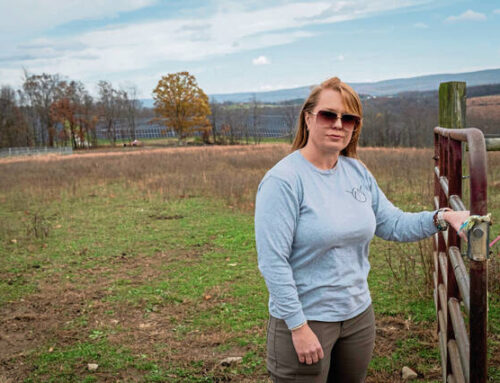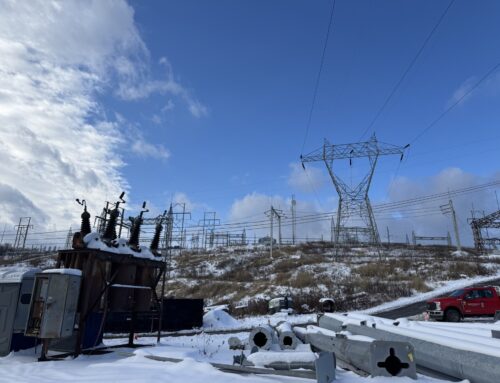More Solar and Battery Storage Were Added to Texas’ Grid Than Any Other Power Source Last Year
February 10, 2025
As the market for renewables in Texas continues to strengthen and innovate, the power makeup of the state’s electric grid is slated to keep shifting toward adding more renewables. Last year, solar and battery storage installation led capacity growth within Texas’ electric grid, according to research from the Federal Reserve Bank of Dallas published in January.
Texas added nearly 1,500 megawatts of battery storage to the grid’s summer rated capacities in 2023. That figure almost tripled to 4,374 megawatts added in 2024, according to the report.
Capacity from solar power added to the grid enjoyed a similar trajectory. In 2023, 4,570 megawatts were added to the grid, while in 2024, nearly 9,700 megawatts were added.
Given that Texas has its own isolated energy grid, the Electricity Reliability Council of Texas (ERCOT) is responsible for managing the majority of energy for its residents.
Historically, ERCOT, which manages 90 percent of the state’s power load, has primarily relied on natural gas. But other energy sources, like wind and solar, have played a critical role in offsetting high demand.
ERCOT added 3,400 megawatts from natural gas power plants in 2024. That’s after more than 1,000 megawatts of natural gas power were inactive within the grid from 2021 to 2023, according to Dallas Fed data.
The capacity growth from solar and battery storage allowed the grid to manage another hot Texas summer in 2024, reported Garret Golding, an assistant vice president for energy program at the Dallas Fed.
Battery storage is relatively new to ERCOT. One of the first battery power storage plants to be connected to ERCOT was in 2021, southeast of Dallas in Kaufman County.
The 50-megawatt plant run by Enel, one of the largest renewable energy owners and operators in the country, was the first of Enel’s 14 battery projects it has since developed across the state.
The forecasted power demand in Texas from population growth and heavy load users like data centers, cryptocurrency mining and artificial intelligence, alongside the competitive market for batteries, is dictating the rising use of storage within ERCOT, said Randald Bartlett, a senior director of operations and management for battery energy storage systems at Enel North America.
Texas’ permitting processes and ability to develop has made it easier to add and build new capacity in comparison to other states with more laborious entryways, Bartlett said.
Before, there wasn’t really adequate criteria and evidence to forecast what batteries would contribute to the grid, ERCOT CEO Pablo Vegas said during a board of directors meeting on Tuesday.
Now, the grid operator added battery contribution to its report forecasting future capacity, demand and reserves.
Battery storage in the ERCOT grid has nearly doubled every year since 2021, Vegas said. At the end of 2024, there were nearly 10,000 megawatts from batteries within ERCOT.
Vegas said the capacity from batteries made a significant difference in ERCOT during bridge hours, or the winter morning hours when the sun has yet to rise and in the evenings after the sun sets.
“Batteries made a meaningful contribution to what those shoulder periods look like and how much scarcity we get into during these peak events,” Vegas said when analyzing the grid’s performance during recent winter storms.
In the spring of 2024, Texas’ installation of utility scale solar outpaced California’s, and jumped from 1,900 megawatts in 2019 to over 20,000 megawatts in 2024. As a result, solar met nearly 50 percent of the state’s peak power demand on some days.
The state’s quick deployment of utility scale solar didn’t happen overnight. It started in 2005, when the legislature instructed the Public Utility Commission of Texas to create competitive renewable energy zones, where the state planned transmission lines to connect cities to renewable energy sources in west Texas.
Initially, it was intended to capture wind power but was able to quickly include solar because of the existing infrastructure, said Dustin Mulvaney, an environmental studies professor at San Jose State University and an author of Planning to Build Faster: A Solar Energy Case Study, published in October by the Roosevelt Institute.
That forward-looking plan is often held up as a model renewable energy advocates and developers say the Federal Energy Regulatory Commission could implement across other regional transmission organizations, by requiring proactive planning and by creating rules of how to pay for transmission systems.
As the state’s grid continues to experience a rapid shift in the type of generation available to serve demand, the state’s grid operator is looking to build a higher voltage transmission system, upgrading from 345-kilovolt lines to 765-kilovolt lines.
In 2024, nearly 78 gigawatts of transmission-connected wind, solar and battery energy storage capacity was installed to the grid. And more than 102 gigawatts of transmission-connected renewable capacity is expected to be installed by the end of 2025, according to a December ERCOT report.
It’s that growth of both demand and renewables connected to the grid that’s led ERCOT to ask the Public Utility Commission to consider upgrading the state’s transmission system rather than expanding its existing one.
The 765-kV lines would provide significant economic and reliability benefits to the ERCOT system, wrote Kristi Hobbs, ERCOT’s vice president of system planning and weatherization, in the grid operator’s submission of its regional transmission plans to the commission in late January.
Regardless of which transmission plan is chosen, Hobbs wrote, the explosive growth projected throughout the next six years and beyond will require major public investment.
About This Story
Perhaps you noticed: This story, like all the news we publish, is free to read. That’s because Inside Climate News is a 501c3 nonprofit organization. We do not charge a subscription fee, lock our news behind a paywall, or clutter our website with ads. We make our news on climate and the environment freely available to you and anyone who wants it.
That’s not all. We also share our news for free with scores of other media organizations around the country. Many of them can’t afford to do environmental journalism of their own. We’ve built bureaus from coast to coast to report local stories, collaborate with local newsrooms and co-publish articles so that this vital work is shared as widely as possible.
Two of us launched ICN in 2007. Six years later we earned a Pulitzer Prize for National Reporting, and now we run the oldest and largest dedicated climate newsroom in the nation. We tell the story in all its complexity. We hold polluters accountable. We expose environmental injustice. We debunk misinformation. We scrutinize solutions and inspire action.
Donations from readers like you fund every aspect of what we do. If you don’t already, will you support our ongoing work, our reporting on the biggest crisis facing our planet, and help us reach even more readers in more places?
Please take a moment to make a tax-deductible donation. Every one of them makes a difference.
Thank you,
Search
RECENT PRESS RELEASES
Related Post




